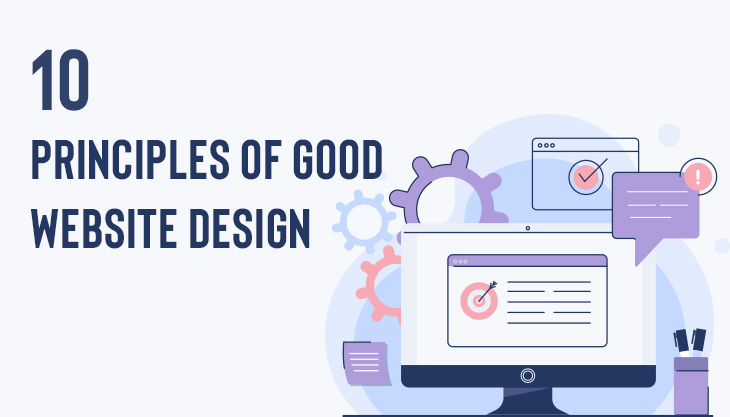There are more than 1 billion websites on the web and users are spoilt for choices. With good Digital Marketing you can end bring in traffic to your Website. But, the real question comes after that – What will help keep visitors where they are – right on your website? Users are judging you within seconds of clicking your website. To speak statistically, 94% first impressions are web design related. Translation: if your website doesn’t have a Efficient Web Design, your Website’s impression as well as performance is going to be affected; and more than that it is going to impact the conversions, sales, and consequently, profits.
So, what all characteristics should a good Website Design include? It is a point any business which is getting its website designed, as well as the Web Designers, need to consider. As a Web Design Company In Bangalore, having designed for a number of client, mentioned below are the 10 Principles Of Website Design which top our list. Keep these principles as your base, and approach Website Design.
Top 10 Principles Of Website Design:
-
Design With A Purpose:
When Designing a Website, be mindful of what is the purpose of your website. It may be a website meant for providing knowledge, or it may be meant simply to provide entertainment, or it may be meant for sale of a product or service. Each and every page of your website should be designed following the purpose it is to serve. While designing you should also consider what purpose every element will be using for designing. Do try to avoid putting in unnecessary elements.
-
Website Speed:
Visitors judge you within seconds. So, if your website is not able to load within seconds, 3 to be precise as stated by Google, other designing factors may do not even matter. Because, the visitors may just click that back button bouncing back from your website. The more time your website takes to load the less will be your page views, conversions, customer satisfaction, etc. For SEO too, make sure to design a speedy website..
-
Be Mobile:
Your website should have a responsive or adaptive web design. It should be accessible through desktop, laptop, tablet, mobile, etc. Thus, the layout of your screen will adjusts itself according to the size of the device; match itself to common screen sizes without change in layout, Google has become mobile-first, and with half the world accessing internet through mobile, you’ll miss out on half of your visitors.
-
Keep It Intuitive And Conventional:
Putting in too many elements and features, or too much designing is a waste, and may even confuse the audience. Remember that your web design needs to be minimal. Be innovative with your design, sure; but still keep it conventional and intuitive. It’ll reduce the learning curve of the visitors.
-
Use Of Structure, Patterns And Motions:
We know, we said that your web designing should follow the principle of being minimal; however, we need to understand that users can easily recognize patterns, edges, motions, etc. They are distracting, accepted, but at times, you can use them to capture the attention of the users and can make them focus on specific areas. The visual hierarchy should be well utilized.
-
The Text Designing:
While designing is about the visual and functional factor, the pattern and design of the text is important too. Considering the layout and the placing of the text, are all important. Remember that visitors are not into detailed reading, so make proper use of typography to catch attention. Follow the ‘F’ pattern as people tend to read from left to right, and top to bottom. Follow the flow of your reader. And make sure your typefaces do not exceed 3 in number.
-
The colour Palette:
Colours convey emotions, and bear different meanings. Blue signifies loyalty and trust, purple royalty and wealth, yellow joy and intensity, green nature and health, etc. You need to use a colour Palette for your website which will evoke right emotions from your visitors, and even guide them to take the action you want. Make use of contrasting colours for highlighting while creating a visually and aesthetically pleasing website.
-
Make The Navigation Easy To Use:
Navigation is a Website Designing aspect which is important for your SEO too. Users should be easily able to move from point X to Y – this should be your driving principle. Design a proper hierarchical structure as it reduces the difficulty in perception for users. Avoid unnecessary complexities which can lose you viewers.
-
The White Space:
An Efficient Web Design makes proper use of White space. It makes cognition easier and improves the perception of the information for the users. Using white space to separate various design elements is a good idea too. The use of white space follows the principle of designing to make reduce the complexity for the user.
-
Test It Out:
This last principle is going to save you bucks. In the process of Web designing, usability testing should be a must for you. It’ll give you much necessary insights, user input, and a fresh perspective.
These 10 top our list of principles for Good Website Design. All of these principles point out to one single principle which comes above all – your Website should be designed with the customer in mind.
















Post Comments